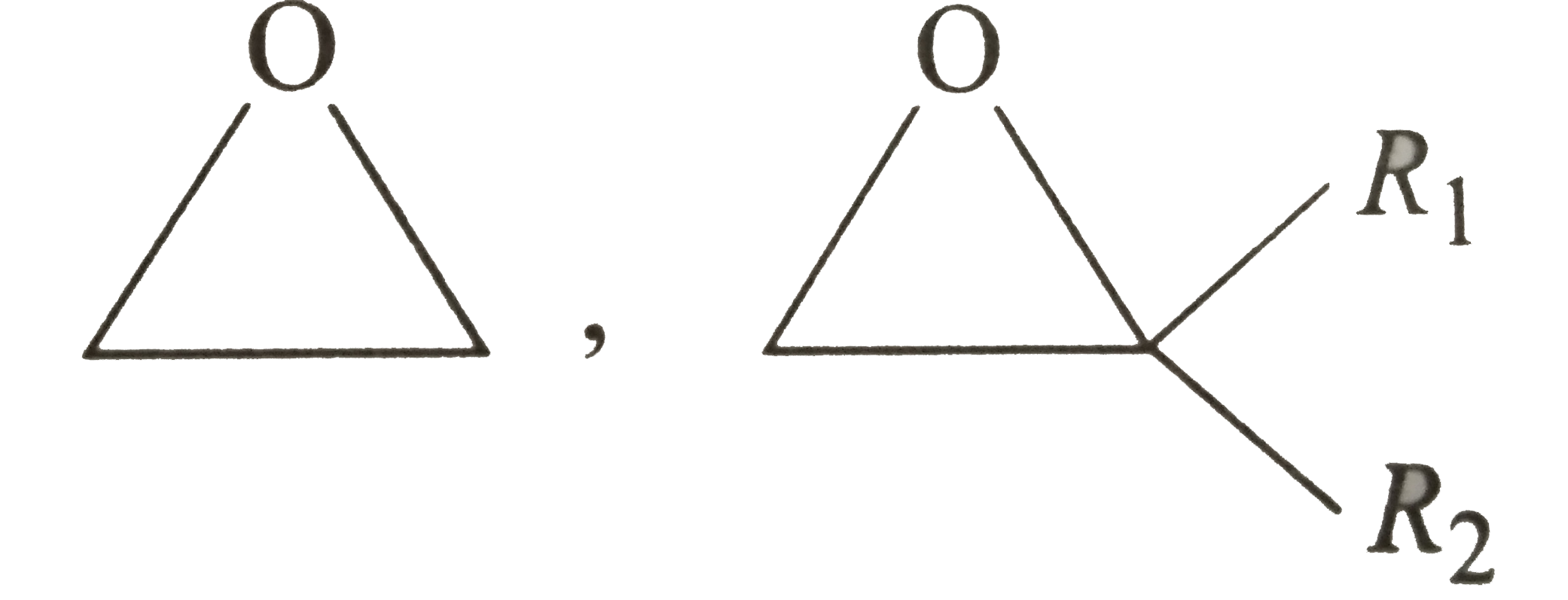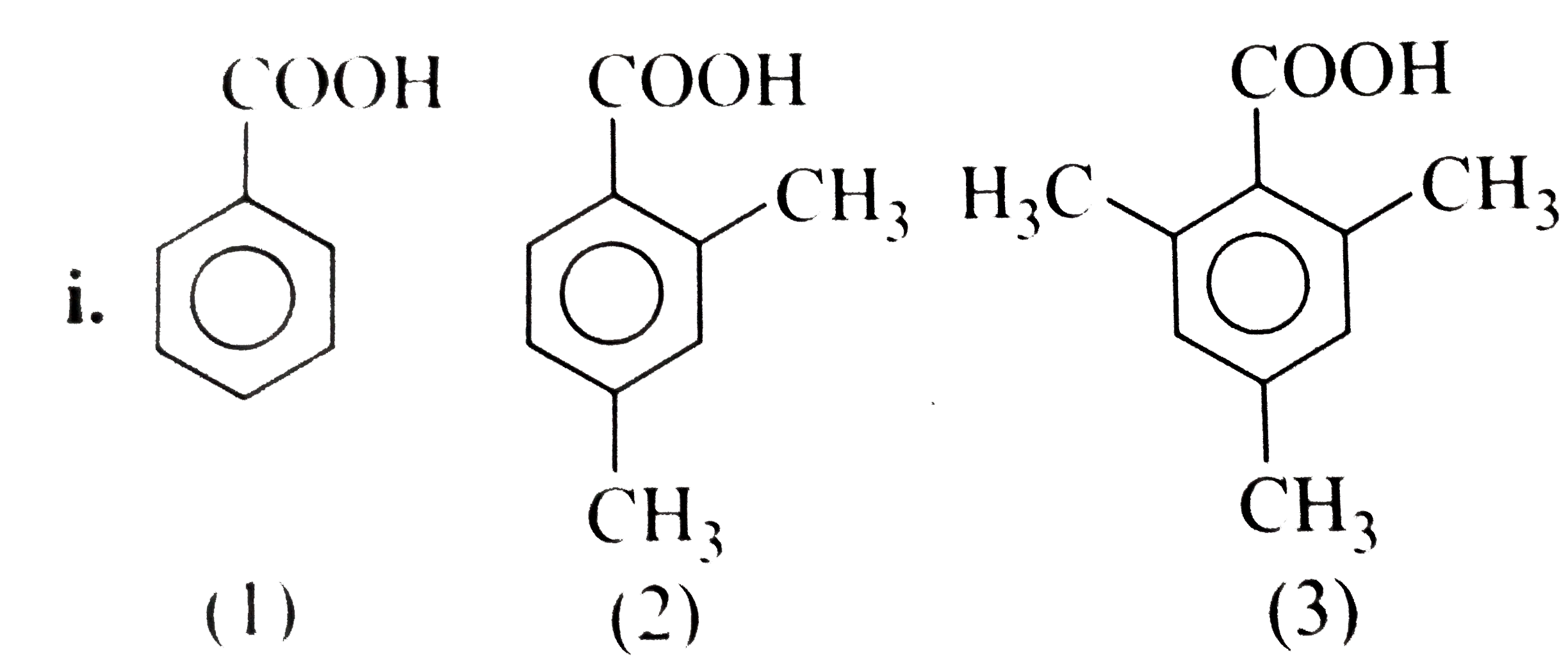How many of the following ethers CANNOT be prepared by Williamson's synthesis?
CH3OCH2CH3,C6H5OCH3,(C6H5)2O,(CH3)3COCH3,(C2H5)2O,(CH3)3C−O−C(CH3)3
The correct Answer is:2
Step by step video, text & image solution for How many of the following ethers CANNOT be prepared by Williamson's synthesis? CH_(3)OCH_(2)CH_(3),C_(6)H_(5)OCH_(3), (C_(6)H_(5))_2O, (CH_(3))_(3)COCH_(3),(C_(2)H_(5))_2O, (CH_(3))_(3)C-O- C(CH_3)_(3) by Chemistry experts to help you in doubts & scoring excellent marks in Class 12 exams.
Updated on:21/07/2023Topper's Solved these Questions
Similar Questions
How many of the following ethers CANNOT be prepared by Williamson's synthesis?
CH3OCH2CH3,C6H5OCH3,(C6H5)2O,(CH3)3COCH3,(C2H5)2O,(CH3)3C−O−C(CH3)3
View SolutionHow many of the following of ethrs cannot be prepared by Williamson's synthesis
CH3OC2H5,(C6H5)2O,C6H5OCH3,C6H5OC2H5
(CH3)3COC(CH3)3,(C2H5)2O,C6H5CH2OC6H5,
(CH)3)3COCH3,(CH3)3COCH2CH3.
View Solution
Knowledge Check
How many of the following ethers CANNOT be prepared by Williamson's synthesis?
CH3OCH2CH3,C6H5OCH3,(C6H5)2O,(CH3)3COCH3,(C2H5)2O,(CH3)3C−O−C(CH3)3A2B4C5D6Which of the following undergoes haloform reaction?
(i) CH3CH2COCH2CI (ii) C6H5COCH3
(iii) C6H5COCHI2 (iv) CH3CH2COCI3Aonly (ii)B(ii) and (iv)C(i), (ii) and (iv)Dall the four
Total number of the following ethers that can be prepared by Williamson synthesis is :
C6H5CH2OC6H5,C6H5OC6H5,(CH3)3COCH2CH3,(CH3)3COC(CH3)3,C6H5OCH2CH3,CH3OCH2CH3
View SolutionHow many of the following ethers can be synthesised by typical Williamson's reaction ?
R2CH−O−CHR2,R3C−O−CR3,R3C−O−CHR2,C6H5−O−C6H5,RCH=CH−O−CH=CHR',R3CCH2−O−CH2CR3
View SolutionHow many of the following alkyl halides would react by SN1 mechanism?
CH3Br,CH3CH2Br,CH3CH2CH2I,(CH3)3CBr,BrCH3CH=CH2,C6H5CH2Br,(CH3)3CCH2Br,C6H5CHBrCH3,CH3CH=CHCH2Cl.
 .
.
View SolutionHow many of the following reagents can be used for the preparation of 3∘ alcool with Grignard reagents ?

HCOOC2H5,CH3COOC2H5,CH3CHO,CH3COCH3,C2H5COC6H5
View SolutionArrange the following compounds in the increasing order of their boiling points:
CH3CH2CH2CHO,CH3CH2CH2CH2OH,H5C2−O−C2H5,CH3CH2CH2CH3
View Solutiona. Acid halides, anhydrides, esters and amides, all of them contain (C=O) group but none of them gives test for (C=O) group, i.e., they do not form oximes, hydrazones, and DNP derivatives, etc. Why?
b. Arrange the following in the decreasing order of nucleophilic addition.
i. (1)−CHO
(2)−COCH3
(3)−COOH
(4)−COCI
(5)−CONH2
(6)−COOCH3
(7)−COOΘ
ii. (1)CH3CHO
(2)CH3COCH3
(3)HCHO
(4)CH2H5CH2COCH3
iii. (1)CH3COCH3
(2)C6H5COCH3
(3)C6H5COC6H5
(4)C6H5CH2COCH3
iv. (1)C6H5CHO
(2)ρ−CH3.C6H4.CHO
(3)ρ−OH.C6H4.CHO
(4)ρ−NO2.C6H4.CHO
(5)ρ−CI.C6H4.CHO
v. (1)HCHO
(2)CH3CHO
(3)CH3COCH3
(4)CI3CCHO
c. Arrange the following in the increasing order of ease of hydrolysis.
(1)CCH3COOC2H5
(2)CH3COCI
(3)(CH3CO)2O
(4)CH3CONH2
d. Arrange the following in the increasing order of ease of acid-catalysed esterification of:
i.
ii. (1)CH3CH2COOH
(2)(CH3)2CHCOOH
(3)(CH3)3CCOOH
iii. (1)CH3CH2CH2OH
(2)CH3CHOHC2H5
(3)(CH3)2C(OH)C2H5
e. Arrange the following esters in decresing order of ease of alkaline hydrolysis.
i. (1)HCOOCH3
(2)CH3COOCH3
(3)(CH3)3CCOOCH3
(4)(CH3)2CHCOOCH3
ii. (1)CH3COOCH3
(2)CH3COOC(CH3)3
(3)CH3COOCH(CH3)2
(4)CH3COOCH2CH3
iii. (1)C6H5COOCH3
(2)ρ−CH3O−C6H4−CCOOCH3
(3)ρ−NO2−C6H4−COOCH3
(4)ρ−Cl−C6H4−COOCH3
View Solution
